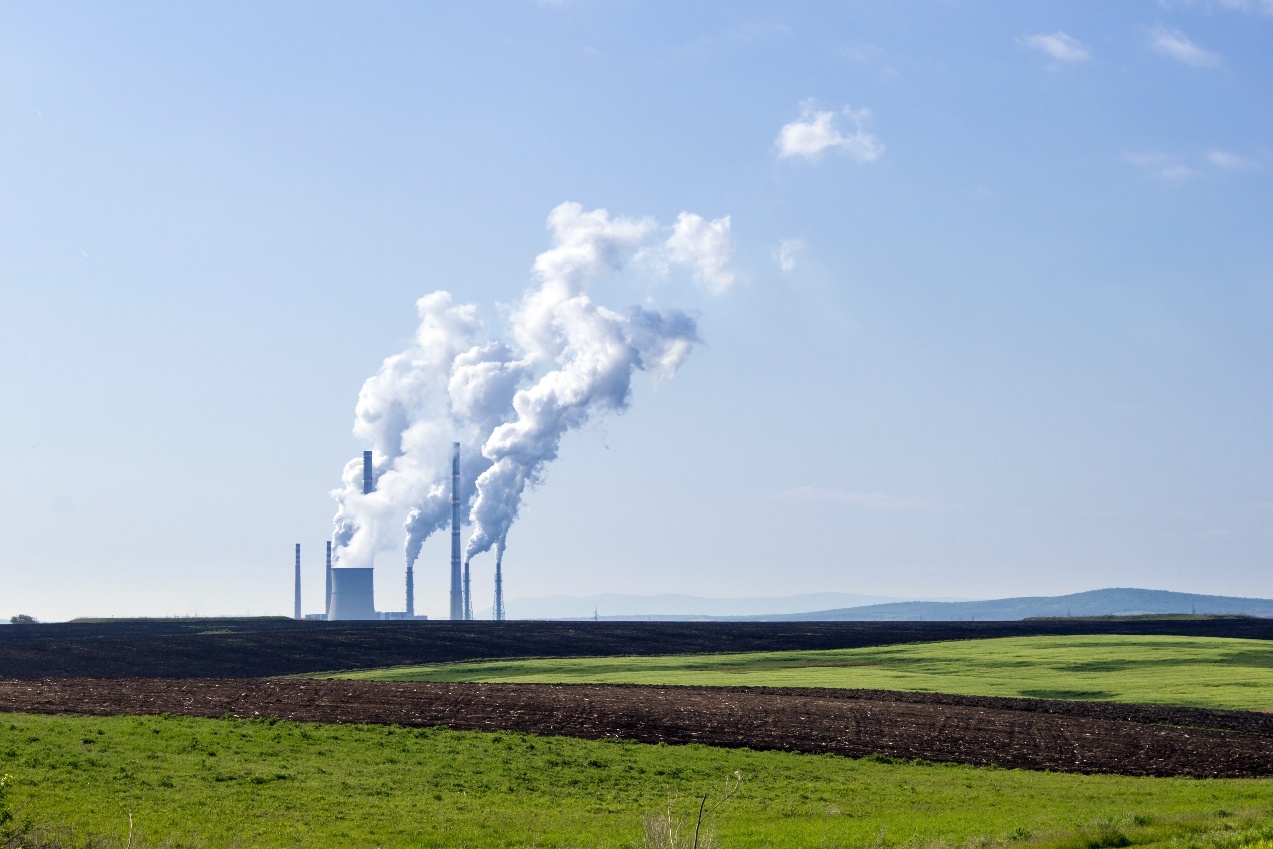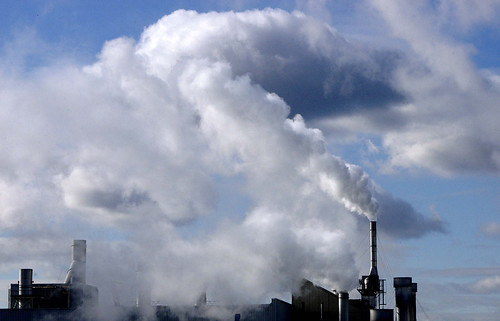On November 10, the Biden Administration announced a proposal to amend the Federal Acquisition Regulation (FAR) to require “major federal suppliers” and “significant federal suppliers” to disclose their greenhouse gas (GHG) emissions and assessments of climate-related risks, and to set targets for GHG emission reductions. The rest of this note summarizes this proposal.
Read MoreAudit, Compliance and Risk Blog
Proposal to Require Climate Risks and Resilience Plans from Significant Federal Suppliers
Posted by Jon Elliott on Mon, Nov 28, 2022
Tags: Environmental, Greenhouse Gas, ghg, CO2 Emissions, Environment, Environmental Policy, Climate, FAR, NASA, DOD
EPA releases data from latest mandatory greenhouse gas emission reports
Posted by Jon Elliott on Fri, Nov 18, 2022
For over a decade, the US Environmental Protection Agency (EPA) has required thousands of facilities and organizations to report annual emissions of greenhouse gases (GHGs) (40 CFR part 98). The most recent reports were due in April 2022, covering 2021 emissions from more than 8,000 entities (I summarized these requirements HERE https://blog.stpub.com/mandatory-ghg-epa-reports-due-april-1-2022). EPA has now published summary compilations of these data, showing an overall 4% increase in emissions compared with 2020. EPA attributes the increases to economic expansion coming out of the COVID-induced downturn, and reminds readers that reported emissions are generally lower than in those first reported for 2010-2011.
Read MoreTags: Environmental risks, Environmental, Greenhouse Gas, CO2 Emissions, Environmental Policy
The US had been a major player in the drafting and enactment of the Kigali Amendment (during President Obama’s administration), but then withdrew its support (during President Trump’s administration). However, the US enacted Kigali-like requirements in the December 2020 coronavirus relief bill (American Innovation and Manufacturing Act of 2020 (AIM Act)), among the many provisions buried within its 5,593 pages; EPA finalized its rules in September 2021 (I wrote about these rules here).
The remainder of this note summarizes the situation.
Why are HFCs being phased down, and how?
HFCs were developed primarily as substitutes for chlorofluorocarbons (CFCs), which are the principal ozone depleting substances (ODSs) targeted by the Montreal Protocol. HFCs have lower but non-zero ozone depleting potential, and are greenhouse gases that contribute to climate change. Accordingly, nearly 30 years after the initial 1987 approval of the Montreal Protocol roughly 200 national and international parties negotiated HFC phase-downs. As adopted in Kigali, Rwanda these amendments divide countries into three groups with different schedules and targets:- developed nations including the United States – cut consumption to 90% of 2011-2013 baseline of most HFCs (plus 15% of those already covered by the Protocol) by 2019, declining to 15% by 2036
- most developing nations, including China and over 100 others - consumption to peak in 2024 at 100% of 2011-2013 baseline of most HFCs (plus 25% of those already covered by the Protocol), declining to 20% by 2045
- 10 hot-climate developing countries (where air conditioning is particularly important), including India, Pakistan and some Gulf states - consumption to peak in 2028 at 100% of 2011-2013 baseline of most HFCs (plus 25% of those already covered by the Protocol), declining to 15% by 2047
After the Trump administration replaced the Obama administration, the US took no action on this agreement. During this period, however, other countries have moved forward to ratify and work to meet their commitments.
What HFC-related provisions did the AIM Act enact?
The massive coronavirus relief bill includes Division S (“Innovation for the Environment”), with section 103 (“American Innovation and Manufacturing Act of 2020”). Without mentioning the Kigali Amendment, section 103 incorporates its requirements into US law:- the legislation lists 18 specific HFCs, and authorizes EPA to designate additional formulations
- EPA was to calculate 2011-2013 production and consumption baselines for each, and to use these to calculate future phase-down levels ranging from 90% in 2020 to 15% in 2036 and thereafter
- EPA was to issue regulations with 270 days (by 9/23/21) to set phase-down requirements, with associated procedural requirements including allowances associated with each baseline amount, and reclamation and destruction methods
EPA’s rules are designed to meet these requirements. In addition, EPA has initiated or re-invigorated other programs to support the phase-down of HFCs and their replacement by refrigerants that are less harmful to global climate and the stratospheric ozone layer.
What now?
Ratification will become official once the US submits formal notification to the United Nations. The new rules took effect on November 4, 2021 and are progressing; EPA proposed 2024-reduction formulas on October 20, 2022.. While domestic requirements will not change from those enacted through the AIM Act, ratification returns the US to the center of international HFC-reduction efforts, and reinforces national commitments to the environment.IImplementation Checklist
- Does the organization manufacture, import or use any ozone depleting substance (ODS) subject to the Montreal Protocol and/or CAA Title VI?
- If the phase-out date for any ODS has passed, do any of the organization’s activities qualify with applicable exceptions or essential uses?
- Does the organization manufacture, import or use any HFCs?
- Has the organization reviewed any such activity to identify alternatives for any HFC that is or may become subject to phase-down under US and international law?
Where do I go for more information?
Information available via the Internet includes:
● US legislation
Tags: Environmental risks, Greenhouse Gas, climate change, Environment, HFCs, Ozone Layer, Environmental Policy, Climate
The US Environmental Protection Agency (EPA) continues to expand and refine environmental compliance requirements, including those related to greenhouse gas (GHG) emissions. In particular, facilities and organizations subject to EPA's mandatory GHG emission reporting rules should be preparing to submit reports covering calendar year 2021. The remainder of this note summarizes these requirements.
Read More
Tags: EPA, Greenhouse Gas, ghg, Environment
US tightens federal standards for greenhouse gas emissions from automobiles
Posted by Jon Elliott on Mon, Jan 24, 2022
During the last decade, federal state authorities have sparred with themselves and with states over regulatory standards limiting greenhouse gas (GHG) emissions from automobiles. Nationally, the US Environmental Protection Agency (EPA) and the National Highway Traffic Safety Administration (NHTSA) share authority over fleetwide and individual vehicle standards. EPA applies authority under the Clean Air act (CAA) and NHTSA applies authority under the Energy Policy and Conservation Act of 1975 (EPCA) including Corporate Average Fuel Economy (CAFÉ) standards. In addition, the state of California has unique CAA authority over vehicle emission; in recent years, Democratic presidential administrations generally produce federal-state cooperation, whereas Republican presidential administrations produce conflicts. (I’ve written about these issues several times, most recently HERE). True to this pattern, on December 21, 2021 EPA issued tighter vehicle emission rules covering Model Years (MY) 2023 through 2026, and NHTSA rescinded its (Trump era) rule preempting California’s stricter GHG emission standards. The remainder of this note discusses these new rules, within the context of ongoing rulemakings.
Read MoreTags: Environmental, Greenhouse Gas, ghg, CO2 Emissions
Regional Greenhouse Gas Initiative prepares to add a new member
Posted by Jon Elliott on Wed, Aug 05, 2020
One of the longest running sub-national greenhouse gas (GHG) control efforts in the U.S. has been the Regional Greenhouse Gas Initiative (RGGI) program. RGGI provides a cap-and-trade program covering GHG emissions from targeted fossil fuel power plants in participating northeastern states. The program is preparing to add a new participating state in 2021 -- Virginia.
Read MoreTags: Environmental, Greenhouse Gas, ghg, RGGI, Fossil Fuel, CO2 Emissions
Northeastern States Propose Regional Cap-and-Trade Program to Reduce Greenhouse Gases From Transportation
Posted by Jon Elliott on Tue, Feb 04, 2020
After nearly a decade of talking and planning, most of the northeast and middle Atlantic states (plus the District of Columbia) in the Transportation and Climate Initiative (TCI) have proposed a cap-and-trade program intended to reduce greenhouse gas (GHG) emissions from transportation. On October 1, TCI issued a “Framework for a Draft Regional Policy Proposal,” and on December 17 a formal “Draft Memorandum of Understanding (MOU)” that jurisdictions can sign to formalize their participation. If things go well, the formal program should begin in 2020.
Read MoreTags: Business & Legal, Environmental risks, Environmental, Greenhouse Gas, ghg, cap-and-trade
DC Circuit Upholds Most of EPA’s 2015 Standards For Ground Level Ozone
Posted by Jon Elliott on Tue, Sep 17, 2019
On August 23, the federal Court of Appeals for the District of Columbia (DC Circuit) upheld most aspects of the National Ambient Air Quality Standards (NAAQS) for ground level ozone adopted by the Environmental Protection Agency (EPA) in 2015. The Clean Air Act (CAA) requires EPA to create a list of air pollutants based on emissions that cause or contribute to air pollution that may reasonably be anticipated to endanger public health or welfare (criteria pollutants), to establish NAAQS based on these criteria, and to review the NAAQS every 5 years.
Read MoreTags: Business & Legal, Health & Safety, Environmental risks, Environmental, EPA, Greenhouse Gas, ghg, CAA
EPA Proposes to Allow Hazardous Air Pollutant Sources to Reclassify From “Major” to “Area” Using Administrative Controls
Posted by Jon Elliott on Tue, Sep 10, 2019
The Clean Air Act (CAA) directs the Environmental Protection Agency (EPA) to define “hazardous air pollutants (HAPs)” that may pose acute health hazards, and to impose regulations to reduce those hazards. EPA requires permits for “major sources” of HAPs based on “Maximum Achievable Control Technologies (MACT),” and lesser controls for non-major “area sources.” Since the Trump Administration took office, EPA has pursued several initiatives to make it easier for sources to reclassify from “major” to “area” in order to reduce their regulatory responsibilities. For example, in January 2018 EPA ended a decades-old policy declaring that every emission source that met major source criteria at the time a MACT became effective was “once in, always in” and could not requalify as a less-regulated area source by accepting legally binding controls that reduce its “potential to emit (PTE).” (I wrote about this change here).
Read MoreTags: Health & Safety, Environmental risks, Environmental, EPA, Greenhouse Gas, ghg, Hazcom, Oil & Gas
Motor Vehicle Greenhouse Gas Standards–California and Four Manufacturers Finesse the Turf War With the Federal Government
Posted by Jon Elliott on Tue, Aug 20, 2019
Since the Trump Administration reversed the federal government’s agreement with California for joint motor vehicle greenhouse gas (GHG) standards, federal and state agencies have moved steadily to assert their respective authorities and to sue their counterparts. However, on July 25, 2019 California and 4 major vehicle manufacturers announced a voluntary agreement that eases the state requirements somewhat while making the looser federal standards irrelevant for those companies – and for any additional manufacturers that might join later.
Read MoreTags: Business & Legal, California Legislation, Environmental risks, Environmental, Greenhouse Gas, ghg










